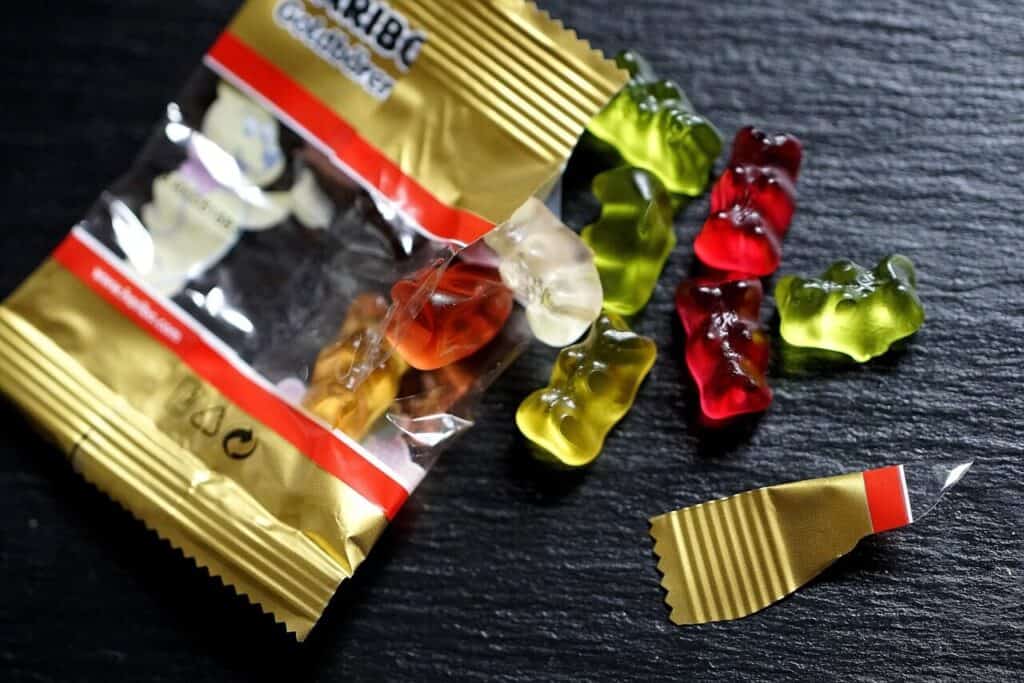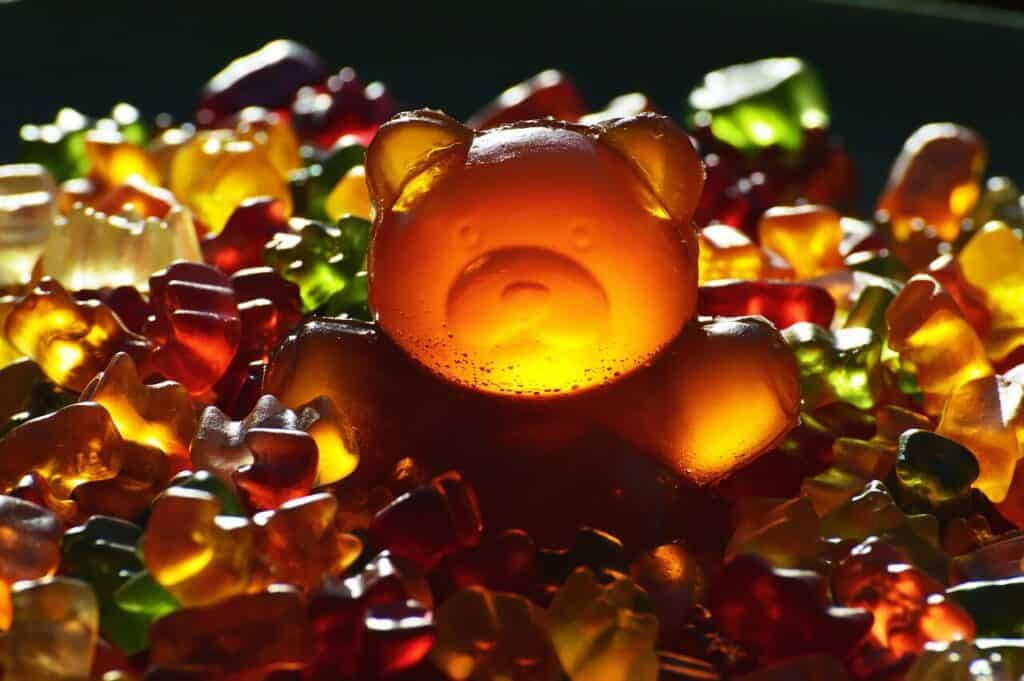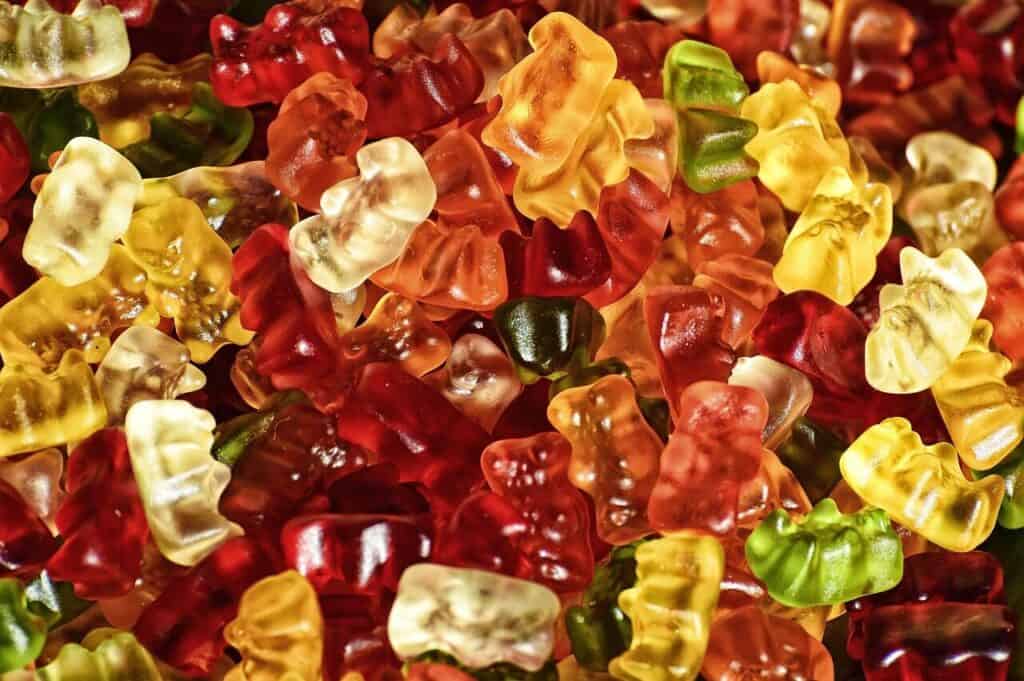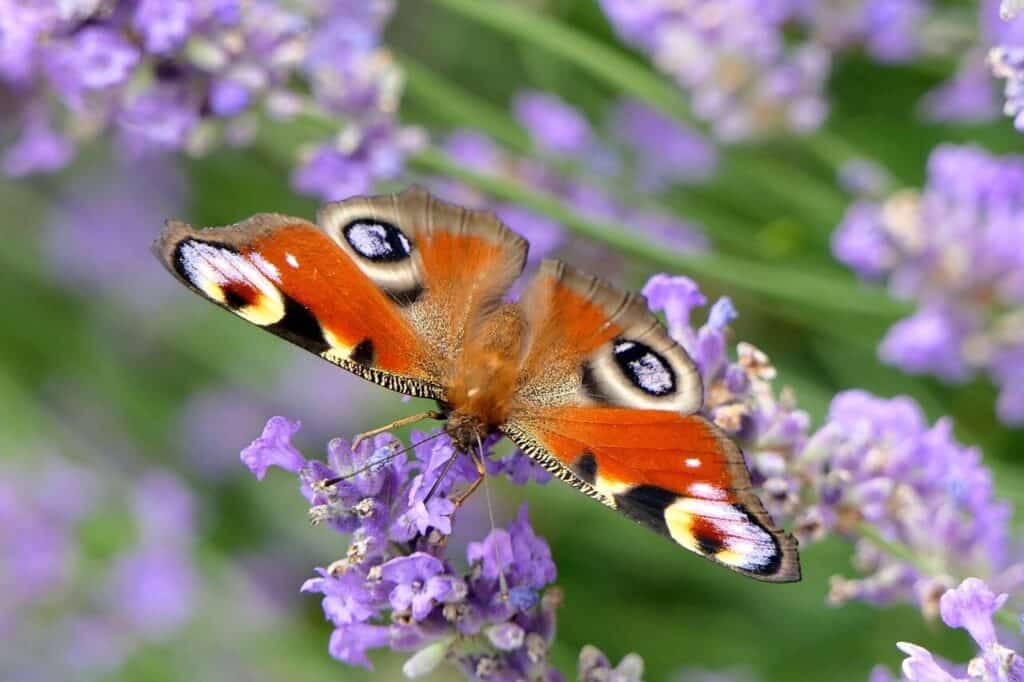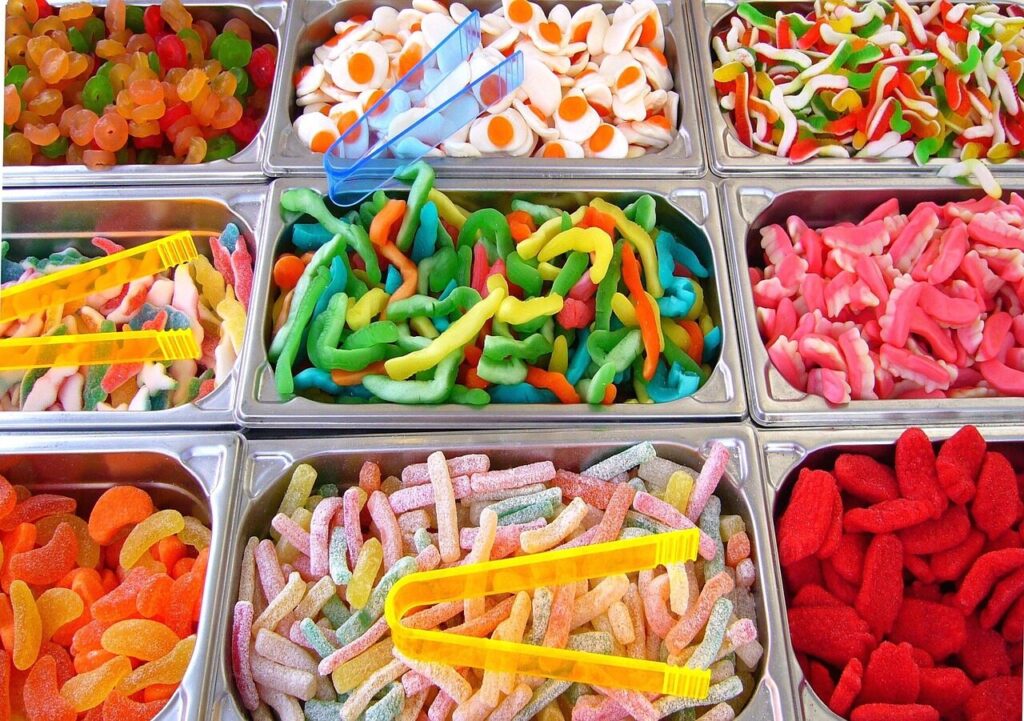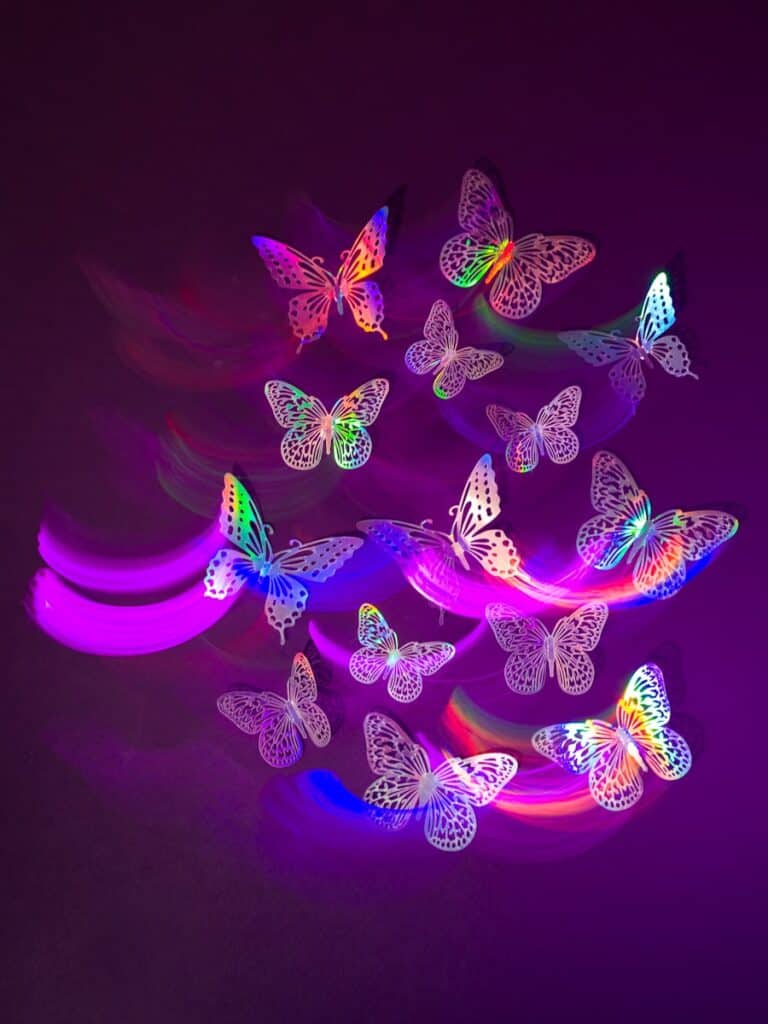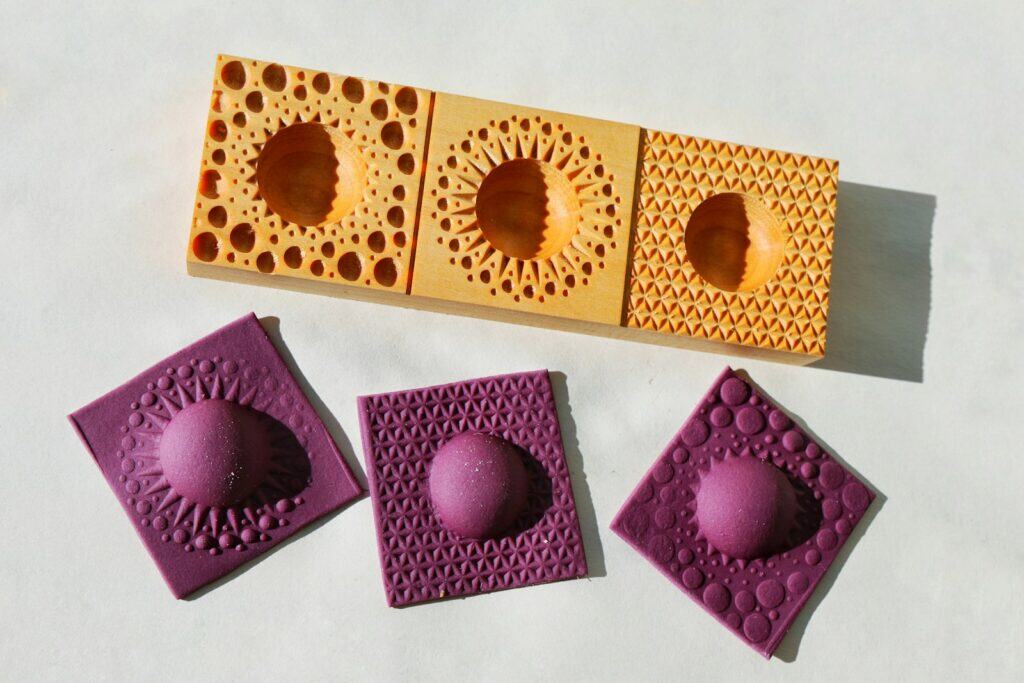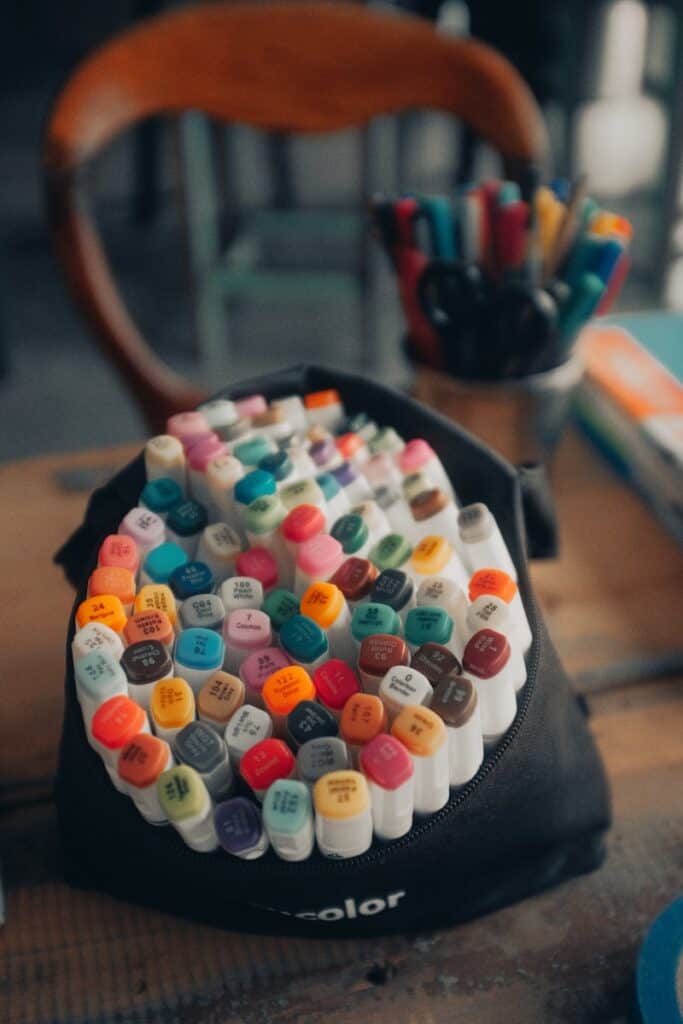A doce ciência das borboletas de goma
Fazer borboletas de goma envolve muito mais do que apenas misturar os ingredientes. É um processo complexo que combina ciência dos alimentos, química e engenharia. Cada etapa afeta o produto final. Desde a textura mastigável até as cores brilhantes, cada elemento é cuidadosamente controlado. Este artigo explora a tecnologia que transforma ingredientes básicos em borboletas de goma estáveis, saborosas e com formato perfeito.
Examinaremos essas áreas importantes:
- A ciência por trás da criação do textura mastigável.
- Como o calor afeta os estágios de cozimento e fixação.
- Os métodos de engenharia usados para modelagem e moldagem.
- A química de adicionar sabores e cores com sucesso.
- Etapas importantes do controle de qualidade e a duração do produto.
A decomposição da Gummy Matrix
Toda goma começa com sua receita. Quando hidrocoloides, açúcares e ácidos se misturam, eles criam um sistema complexo chamado de matriz da goma. Cada ingrediente tem uma função específica. Compreender essas funções é fundamental para controlar o resultado do produto final.
A espinha dorsal do hidrocoloide
A gelatina é o principal agente gelificante das tradicionais borboletas de goma. Essa proteína vem do colágeno. Sua estrutura exclusiva de tripla hélice cria a textura clássica de goma que conhecemos e adoramos.
A característica mais importante da gelatina é sua força de Bloom. Esse número nos diz o quão firme e forte será o gel. Para que as borboletas de goma tenham aquela sensação perfeita de mastigação e elasticidade, usamos gelatina com Bloom entre 220 e 250. Números mais baixos de Bloom produzem géis mais macios e fracos. Números mais altos podem tornar a textura muito dura e emborrachada.
O O processo começa com a mistura de gelatina com água. Isso permite que as cadeias de proteínas se desenrolem. Quando aquecemos a mistura durante o cozimento, essas cadeias se espalham completamente na solução de açúcar. Quando a mistura esfria, as cadeias se conectam novamente e se reticulam. Elas retêm a água e formam uma rede de gel estável e tridimensional. É isso que dá às gomas sua estrutura.
A gelatina é padrão, mas existem outras opções. A pectina cria uma textura diferente. Ela produz uma mordida mais “curta” e macia, típica das geleias de frutas, em vez de gomas de mascar.
Atributo | Gelatina | Pectina |
Fonte | Animal (colágeno) | Planta (principalmente cascas de frutas cítricas e maçãs) |
Textura | Mastigável, elástico, derrete próximo à temperatura corporal | Curto, macio, quebradiço |
Definição de necessidades | Define-se após o resfriamento | Requer pH específico e alto teor de açúcar |
Sensação bucal | Derretimento lento e persistente | Quebra limpa, liberação mais rápida do sabor |
A ciência do açúcar
O açúcar nas borboletas de goma faz muito mais do que adicionar doçura. Ele é fundamental para a textura e para manter o produto estável.
A sacarose, ou açúcar de mesa comum, proporciona o principal sabor limpo e doce. Mas usar somente sacarose causaria problemas. Com o tempo, ela tornaria o produto arenoso e cristalizado.
É por isso que adicionamos xarope de glicose, também chamado de xarope de milho. Ele atua como um “agente de tratamento”. O xarope de glicose contém cadeias de açúcar de diferentes comprimentos, como dextrinas, maltose e glicose. Essas moléculas variadas atrapalham as moléculas de sacarose que tentam formar estruturas ordenadas. Isso evita a cristalização e mantém a textura suave e uniforme.
Também usamos com frequência o açúcar invertido, que é uma mistura de glicose e frutose. Esse ingrediente atrai e retém a água muito bem. Essa propriedade ajuda a manter as gomas macias e impede que elas sequem. Isso também faz com que o produto dure mais tempo.
A função do ácido
Os ácidos de grau alimentício são essenciais na fabricação de gomas. Usamos principalmente o ácido cítrico e o ácido málico. Eles servem a três propósitos importantes.
Primeiro, eles acrescentam a acidez que equilibra a doçura intensa de todo o açúcar. Geralmente, combinamos o tipo de ácido com o sabor. O ácido cítrico funciona bem com sabores cítricos. O ácido málico proporciona a acidez duradoura que você encontra nos sabores de maçã ou frutas vermelhas.
Em segundo lugar, e mais importante, o ácido controla o pH da mistura de goma. A gelatina precisa de um ambiente ácido específico para se fixar adequadamente e atingir sua melhor força de gel. Para as gomas à base de gelatina, o nosso objetivo é obter um pH entre 3,4 e 3,6.
Por fim, o ácido ajuda a preservar o produto. Ao diminuir o pH e reduzir a água disponível, ele contribui para a estabilidade geral contra micróbios nocivos.
O processo de fabricação
A transformação de ingredientes líquidos em borboletas de goma acabadas envolve vários estágios. A temperatura, o tempo e a mecânica devem ser controlados com precisão. Cada etapa é crítica e afeta a qualidade final.
Dosagem e cozimento
Começamos misturando água, açúcares e gelatina em chaleiras grandes e aquecidas. Essa mistura é então cozida até um ponto final preciso.
O cozimento faz mais do que apenas dissolver os ingredientes. É uma etapa de concentração. Aquecemos a mistura até uma temperatura-alvo, geralmente entre 115-120°C (240-250°F). Isso atinge um teor específico de sólidos totais.
Medimos isso em Brix, que mostra a porcentagem de sólidos dissolvidos (principalmente açúcares) na solução. Para gomas que podem ser guardadas na prateleira com a textura certa, buscamos um Brix de 78 a 82. Nesse estágio, a mistura muda de um líquido turvo para um xarope claro e muito espesso. Isso mostra que a quantidade certa de água evaporou.
Dosagem de componentes voláteis
Adicionamos ácidos, sabores e corantes somente depois que a mistura foi cozida e esfriou um pouco. Esse momento é crucial.
Esses ingredientes são sensíveis ao calor. Adicioná-los em temperaturas máximas de cozimento causaria grandes problemas. Os sabores evaporariam e perderiam sua força. Muitas cores, especialmente as naturais, ficariam marrons ou mudariam completamente. Adicioná-los após o cozimento garante que o produto final permaneça vibrante e saboroso.
Deposição e moldagem
Moldar as borboletas de goma em sua forma complexa é uma etapa fundamental da fabricação. Há dois métodos industriais principais.
O método tradicional de alto volume usa um sistema mogul de amido. As bandejas preenchidas com amido de grau alimentício são impressas com moldes em forma de borboleta. A mistura quente de goma é então despejada nessas impressões. O amido faz duas coisas: mantém a forma da goma e retira uma pequena quantidade de umidade da superfície. Isso forma uma leve pele.
Uma opção mais recente utiliza moldes de silicone. Aqui, a mistura vai diretamente para bandejas de silicone reutilizáveis e flexíveis. Esse método permite obter detalhes muito mais finos e um acabamento mais limpo e brilhante. É perfeito para os padrões delicados das asas de borboleta.
Fator | Sistema Starch Mogul | Moldes de silicone |
Fidelidade de detalhes | Mais baixo; produz formas mais simples | Alta; excelente para desenhos complexos |
Velocidade/Taxa de transferência | Muito alto; adequado para produção em massa | Menor; geralmente usado para lotes menores |
Custo | Baixo custo recorrente (o amido é reutilizável) | Alto investimento inicial no molde |
Limpeza | Complexo; requer peneiramento/secagem do amido | Simples; os moldes podem ser lavados facilmente |
Acabamento | Fosco, pode ter resíduos de amido | Superfície brilhante e muito limpa |
Fixação e cura
Depois de moldadas, as gomas vão para uma “sala de secagem” com condições cuidadosamente controladas. A temperatura e a umidade são reguladas para ajudar no processo final de endurecimento e cura. Isso pode levar de 24 a 48 horas.
Duas mudanças importantes acontecem aqui. Primeiro, à medida que a temperatura cai, a rede de gelatina se forma e endurece. Esse processo é chamado de gelificação.
Ao mesmo tempo, uma quantidade controlada de umidade evapora das gomas. Essa etapa de redução da umidade torna o produto mais firme. Ele se transforma de um gel macio em um doce final, denso e mastigável.
Acabamento e polimento
Após a cura, as borboletas de goma são removidas de seus moldes. Em um sistema de amido mogul, isso significa tombar e jatear as gomas para remover todo o amido restante.
A etapa final geralmente é um polimento leve. As gomas são agitadas em um tambor grande com uma pequena quantidade de agente de polimento. Pode ser óleo mineral de grau alimentício ou cera de carnaúba. Isso evita que as peças individuais grudem nas embalagens e dá a elas um brilho atraente e lustroso.
Engenharia sensorial
As borboletas de goma atraem mais do que apenas o nosso sentido do tato. Seu sabor, cheiro e aparência também são importantes. Essas características sensoriais não são acidentais. Elas são tecnicamente projetadas e controladas por meio de uma cuidadosa seleção de ingredientes.
Sistemas de entrega de aromas
A escolha entre aromas naturais e artificiais envolve o equilíbrio entre custo, estabilidade e o que os consumidores desejam. Os aromas artificiais geralmente são mais fortes e lidam melhor com o calor. Os aromas naturais vêm de fontes vegetais e são preferidos para produtos com “rótulo limpo”.
Para produtos premium, usamos uma técnica mais avançada chamada encapsulamento de aromas. Pequenas gotas de óleo de aroma são revestidas em uma casca protetora. Esse invólucro protege o aroma contra a quebra quando misturado à mistura quente. O benefício real vem quando alguém mastiga a goma. Isso quebra a casca e libera uma explosão de sabor fresco.
A combinação de ingredientes também ajuda. O sabor parece mais forte quando o perfil ácido combina com o tipo de sabor. Uma goma com sabor de limão fica mais saborosa com ácido cítrico. O sabor de maçã verde funciona melhor com ácido málico.
A paleta de cores
Para criar o visual vibrante e multicolorido das borboletas de goma, é necessário um profundo conhecimento dos corantes alimentícios.
Assim como os aromas, os corantes podem ser artificiais (corantes FD&C) ou naturais. Os corantes naturais vêm de fontes como cúrcuma (amarelo), suco de beterraba (vermelho) e extrato de espirulina (azul).
As cores naturais apresentam desafios técnicos. Em geral, elas são mais sensíveis ao calor, à luz e ao pH do que as artificiais. Por exemplo, as antocianinas são pigmentos encontrados no repolho vermelho ou no sabugueiro. Elas são excelentes corantes naturais vermelhos/roxos. Mas sua cor exata pode mudar drasticamente com base no pH final da goma.
Obter uma distribuição uniforme da cor é outra etapa fundamental. O corante deve ser completamente misturado à mistura. Isso evita manchas, listras ou coloração desigual no produto final.
Qualidade e estabilidade
Uma borboleta de goma bem-sucedida deve ser perfeita quando é feita e permanecer assim durante toda a sua vida útil. Isso requer um forte controle de qualidade durante a produção. A receita também deve ser projetada para estabilidade a longo prazo.
Pontos críticos de controle
UMA Programa de garantia de qualidade para a produção de gomas concentra-se em vários pontos de controle importantes. Eles garantem a consistência.
- Inspeção de matéria-prima: Verificamos as matérias-primas recebidas, especialmente a força Bloom da gelatina e a pureza do açúcar. Isso afeta diretamente a textura final.
- Verificações em processo: Durante a produção, monitoramos constantemente a temperatura da mistura e os níveis de Brix. Qualquer desvio pode comprometer a textura e a estabilidade de todo o lote.
- Teste de produtos acabados: As gomas acabadas passam por vários testes. Um analisador de textura mede a firmeza e a elasticidade para garantir que elas atendam aos padrões. Também medimos a atividade da água (aW). Essa é a quantidade de água “livre” disponível para o crescimento de micróbios nocivos. Nosso objetivo é obter uma atividade de água abaixo de 0,80 para um produto estável na prateleira. Por fim, um painel de degustação treinado avalia o produto quanto ao sabor, à textura e à aparência corretos.
Fatores de prazo de validade
A durabilidade das borboletas de goma depende tanto da receita quanto da embalagem. A baixa atividade de água, combinada com a acidez do produto, cria um ambiente em que a maioria das bactérias e do mofo não consegue sobreviver.
A embalagem desempenha um papel final e crucial. Ela deve bloquear efetivamente a umidade e o oxigênio do ambiente. Uma embalagem ruim fará com que as gomas absorvam umidade e se tornem pegajosas ou percam umidade e se tornem duras e resistentes.
Por experiência própria, os problemas de textura mais comuns são a “transpiração” (sinérese), em que a água vaza devido a um equilíbrio ácido ou processo de cozimento inadequados. O outro problema é ficar muito duro devido à secagem excessiva durante a cura ou à má embalagem.
Uma delícia projetada
A borboleta de goma parece uma guloseima simples e divertida. Mas, na verdade, é uma prova da ciência precisa dos alimentos e da engenharia de processos. Das interações moleculares na mistura inicial ao controle de temperatura nas salas de secagem, cada etapa é cuidadosamente gerenciada. O produto final equilibra a química, a física e a ciência sensorial. Tudo isso é projetado para proporcionar uma experiência consistente e agradável. É uma notável tecnologia de alimentos, moldada em uma forma simples e doce.
Links de referência:
- Gelatina - ScienceDirect Topics https://www.sciencedirect.com/topics/agricultural-and-biological-sciences/gelatin
- Bloom (teste) - Wikipédia https://en.wikipedia.org/wiki/Bloom_(test)
- Estabilidade de armazenamento a longo prazo de géis de gelatina tipo A e tipo B: O efeito da força de Bloom e dos co-solutos - ScienceDirect https://www.sciencedirect.com/science/article/pii/S0268005X22000558
- Avaliação da força do bloom de gelatina nas propriedades do hidrogel de metacriloil de gelatina - ScienceDirect https://www.sciencedirect.com/science/article/abs/pii/S1751616124001413
- Umidade e prazo de validade em confeitos de açúcar - PubMed (NIH) https://pubmed.ncbi.nlm.nih.gov/20112158/
- Relações de água em confeitos - Atividade de água em alimentos - Wiley Online Library https://onlinelibrary.wiley.com/doi/10.1002/9781118765982.ch20
- Atividade e qualidade da água em produtos de confeitaria - Indústria de alimentos da região Ásia-Pacífico https://www.apfoodonline.com/industry/water-activity-and-quality-in-confectionery/
- Atividade aquática, balas e confeitos: Maximize o sabor e a textura - AQUALAB https://aqualab.com/en/knowledge-base/market-insights/water-activity-candy-and-confectionery
- Atividade de água | Barry Callebaut https://www.barry-callebaut.com/en/news-events/water-activity
- Prazo de validade: Definição de metas e avaliação de produtos - Chocolate Academy https://www.chocolate-academy.com/en-US/shelf-life-setting-goals-and-evaluating-products

